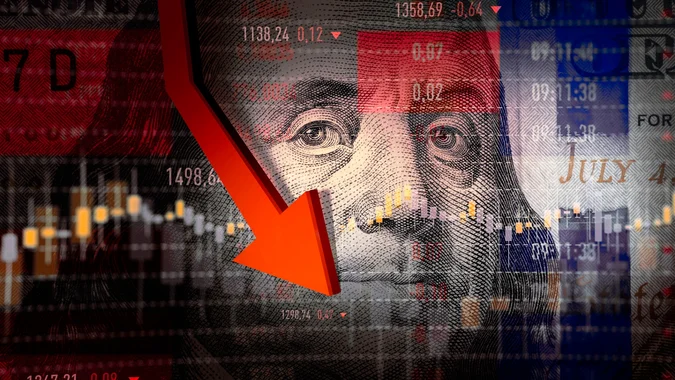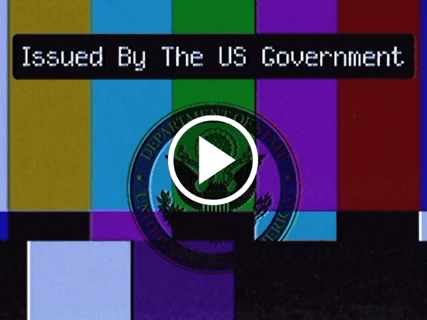This is a world of numbers.
A dazzling array of digits shapes our understanding of economies, financial markets, and everything in between. However, like any game, those dealing the cards often have the power to rig the outcome.
Consider the euphoria that took Wall Street by storm last week. The equity markets rejoiced over the creation of more jobs than predicted. The nonfarm payrolls for April swelled by 253,000, despite the Bankster Bandits hoisting the interest rates for the 10th consecutive time.
Yet, isn’t it suspicious how the Bureau of Labor Statistics bureaucracy casually dialed down March’s job count from 165,000 to a meager 71,000?
Or how we’ve conveniently forgotten that the February job numbers, originally credited for boosting equities, were dramatically revised from 248,000 to a mere 78,000?
Interest Rate Hikes and Inflation: A Dangerous Dance
Since March 2022, interest rates have been ruthlessly raised 10 times, landing between 5 percent and 5.25 percent. This relentless march is supposedly aimed at tackling inflation—an inflation we were initially assured was temporary, then transitory.
Whether the Feds genuinely misunderstood the scope of inflation or willfully misled us, they are now conveniently blaming rising wages for inflationary pressures. This deflection conveniently glosses over their own zero-interest rate policy and Washington’s multi-trillion dollar spending spree to combat the COVID War. As a result, we’re witnessing inflation spiraling out of control and the creation of hyper-bubbles.
This scenario was predictable.
Attention: The US is Facing The BIGGEST Threat Of The Century. . . An Event That May Leave 290 Million Americans Dead in its Wake!
The higher the interest rates rise, the deeper the economy sinks. But the shockwaves take time to reach Main Street, and that time has arrived.
The Mortgage Bankers Association (MBA) recently reported that mortgage credit availability had slumped to its lowest level in a decade, a chilling 99.6 in April. According to Joel Kan, MBA’s Vice President and Deputy Chief Economist, this contraction reflects the tightening of broader credit conditions due to recent banking sector challenges and an uncertain economic outlook.
The Office Building Bust: A Hidden Time Bomb
A more devastating and widespread economic fallout is just beginning to make headlines: the Office Building Bust. This trend was foreseeable when politicians launched the COVID War, forcing people to stay home and work remotely. As a result, the work-from-home model has become a staple of ‘normal‘ life for many, and slowing economies have led to a decrease in demand for rented office space.
Also Read: The ‘Pandemic’ Treaty: A Wealth Transfer Scheme Disguised as Public Health Protection. A Global Health Dictatorship in the Making.
The New York Times recently highlighted that a record 94 million square feet of office space in Manhattan is now up for lease. The pandemic saw the office building ecosystem collapse as employees shifted to remote work, leading to an unprecedented high vacancy rate.
However, it’s crucial to remember that the numbers don’t lie. It wasn’t the pandemic, but the politically motivated lockdown mandates that caused the impending economic disaster.
The COVID War: A Pandemic of Lies
The media narrative would have us believe that COVID-19 was the main culprit behind the economic devastation.
But the real perpetrators were the politicians, bureaucrats, and mainstream media who continue to manipulate the narrative and deflect blame.
The World Health Organization (WHO) recently declared the COVID-19 pandemic over after three years and 20 million deaths. However, the term ‘pandemic‘ carries no legal meaning. It was merely a tool used to spread fear and maintain control.
Viral Content: Brace Yourselves… A Storm is Coming! You Just Have to Know Where to Look!
The truth is that, by March 2020, only 4,776 COVID deaths had been reported out of a global population of nearly 8 billion. The vast majority of fatalities were among the elderly and immunocompromised, a demographic that is, tragically, at risk during any influenza season.
Playing Fast and Loose with Unemployment Figures The U.S. government has consistently played fast and loose with unemployment figures, even in the face of a pandemic. It’s become common to see monthly job numbers revised downwards significantly, with little to no media coverage or public outcry.

The Bureau of Labor Statistics (BLS) routinely adjusts these figures, often citing “seasonal variations” or “statistical errors”. However, these revisions dramatically alter the perception of the economy’s health. For example, an initial report of 250,000 new jobs may be heralded as a sign of strong economic growth. But if this number is quietly revised down to 75,000 a few months later, the narrative drastically changes.
It’s essential to question why these “errors” consistently paint an overly optimistic picture initially.
It’s worth asking whether these ‘mistakes‘ are genuine anomalies or strategic moves designed to manipulate public sentiment and market behavior.
Donald J. Trump: “If You Want Peace, Prepare For War. . .” Save America!
Inflation: The Hidden Tax Inflation, often described as the ‘hidden tax‘, continues to surge, hitting the pockets of average consumers the hardest. While the Feds attribute the inflationary pressures to rising wages, they fail to acknowledge their role in exacerbating the situation.
Through a combination of low-interest rates and excessive government spending, the Feds have effectively flooded the market with cheap money. This excess liquidity is a primary driver of inflation.
Inflated wages are simply a symptom, not the cause.
The Oil Market Roller Coaster
In a dramatic twist, Brent crude rallied, rising $1.71, settling up 2.3 percent at $77.01, while U.S. West Texas Intermediate jumped $1.82, an increase of 2.6 percent, hitting $73.16. Analyst Tina Teng from CMC Markets highlighted that this rebound came as recent U.S. data seemed to assuage fears of an imminent economic recession.

The future of oil prices remains a volatile game. The wildcard factors encompass China’s uncertain reopening, looming recession fears in the U.S., and possible OPEC+ output cuts.
Moreover, escalating tensions in the Middle East, particularly Israel’s military confrontation with Iran, could throw fuel on the fire of oil prices.
The Glitter of Gold Amid Economic Headwinds
Turning to gold, the precious metal edged up 0.2 percent to $2,021.37 an ounce. However, potential short-term challenges loom as the USD Index surpassed 101.50, with expectations that the Fed will maintain high interest rates amid persistent inflation.

A robust dollar typically makes gold less appealing to international buyers. Veteran analyst Gerald Celente has consistently emphasized that the dollar’s might hinges on high interest rates.
Gold investors also have an eye on the U.S. debt ceiling discussions.
FX Street notes that an agreement to raise the nation’s debt ceiling could inject significant liquidity into the economy, enhancing gold’s allure as a safe haven.
However, U.S. Treasury Secretary Janet Yellen sternly warned that Congress needs to act responsibly, or the country will face an “economic and financial catastrophe that will be of our own making.” She underscored the looming possibility of the U.S. government running out of money as early as 1 June.

Meanwhile, the Dow Jones Industrial Average closed down 56.88 points, or 0.17 percent, at 33,561. The benchmark S&P 500 was down 18.95, or 0.46 percent, to 4,119.17. The tech-heavy Nasdaq was down 77.36, or 0.63 percent, at 12,179.55.
John Williams, the New York Federal Reserve president, addressed the Economic Club of New York, suggesting that the Central Bank still sees inflation as a problem. “Although we have seen some signs of a gradual cooling in the demand for labor—as well as for some goods and commodities—overall demand [in the jobs market] continues to exceed supply,” he explained.

The Asian Market Stumbles
The Hang Seng was the biggest loser, tumbling 429.45, or 2.12 percent, to 19,867.58 after new data from China revealed a slowing economy. Imports declined by 7.9 percent last month, a drop of 1.4 percent from March.
Economists attribute this slowdown to weakening demand and depressed commodity prices.

Lastly, Bitcoin, the world’s most popular cryptocurrency, was trading up $51.20, or 0.19 percent, to $27,726.70. However, the crypto market has been rattled by rising transaction costs.
Decrypt reported that, according to Bitinfocharts, the current average price to make a transaction on the Bitcoin network is $31.14.
In El Salvador, a Twitter user observed someone withdrawing $100 from a Bitcoin account while incurring a staggering $20 in fees.
Also Read: Shattering Illusions: The Brave Quest for Truth and Freedom Against the Powerful Elite Dictating Our World’s Course!
Rising Energy Prices: A Double-Edged Sword
The Biden administration’s plan to purchase crude oil to refill the U.S.’s Strategic Petroleum Reserve has given oil prices a boost.
CNBC cited the Energy Information Administration’s Short Term Energy Outlook, which predicts that seasonal increases in oil consumption and a decline in OPEC crude oil production will exert upward pressure on crude oil prices in the coming months.
However, the repercussions of higher energy prices will be felt across the global economy, impacting industries, households, and consumer spending. This double-edged sword threatens to exacerbate inflationary pressures and hinder economic recovery in numerous countries.
As the world navigates the economic riptide, the risk of an economic downturn casts a shadow on the horizon. The U.S. debt ceiling crisis, high inflation, and the threat of a recession all contribute to the uncertainty clouding global markets.
Donald J. Trump: “If You Want Peace, Prepare For War. . .” Save America!
In Asia, China’s slowing economy and weakening demand for imports indicate that the region is not immune to the mounting challenges faced by the global economy. This situation could ripple through the international community, intensifying the turmoil in financial markets.
The Powder Keg of Global Politics

The explosive combination of economic instability and geopolitical tensions, such as the escalating conflict between Israel and Iran, has the potential to ignite a powder keg of global crises. The resulting chaos would reverberate through international politics, trade, and financial systems, leaving no nation unscathed.
As countries grapple with these converging challenges, governments and central banks worldwide must walk a tightrope, balancing the need to support economic growth with the imperative to control inflation and maintain financial stability.
Oil and gold stand at the crosshairs of a rapidly shifting global economic landscape.
The volatile oil market, gold’s allure as a safe haven, and the turbulence in the cryptocurrency sphere all underscore the precarious nature of the current economic climate.
As the world teeters on the brink of an economic precipice, the interplay between these factors and their impact on financial markets will be critical to watch.
Governments, investors, and everyday citizens must brace themselves for the potentially dramatic and aggressive consequences of the economic riptide engulfing global markets.





